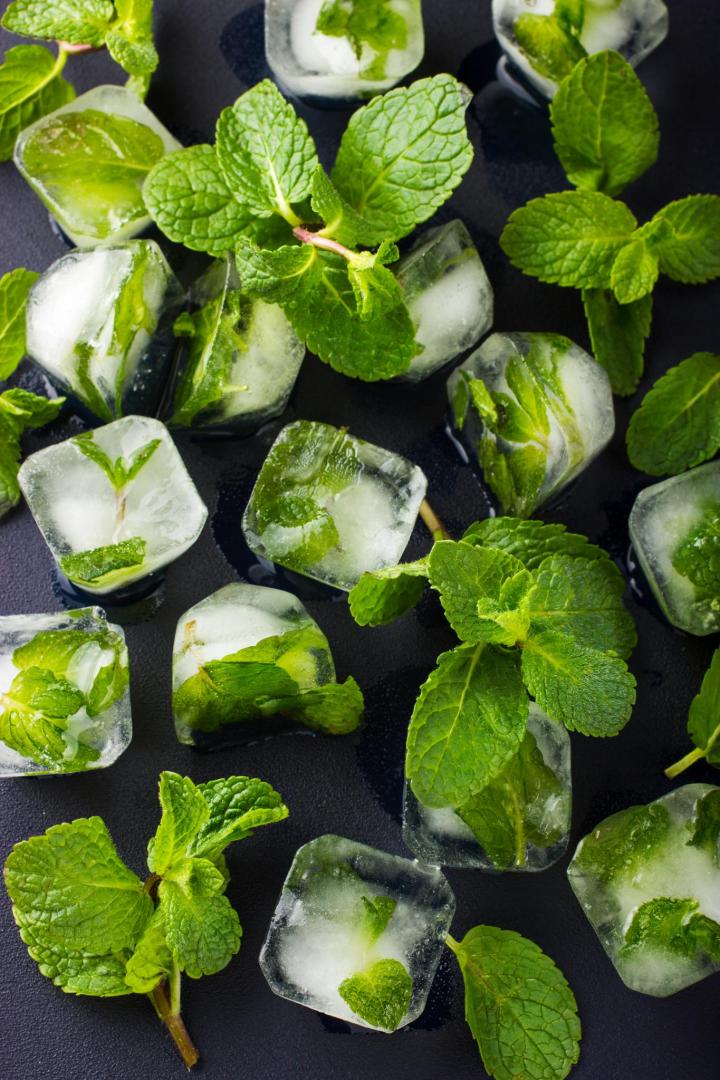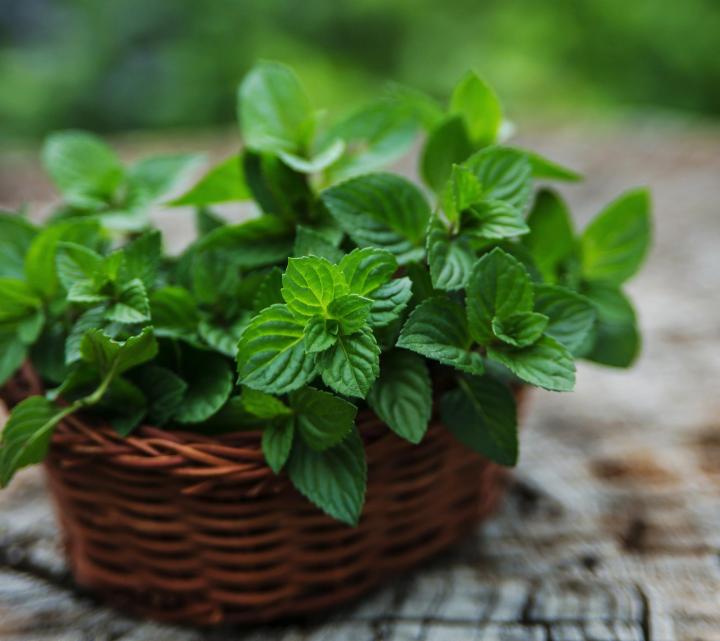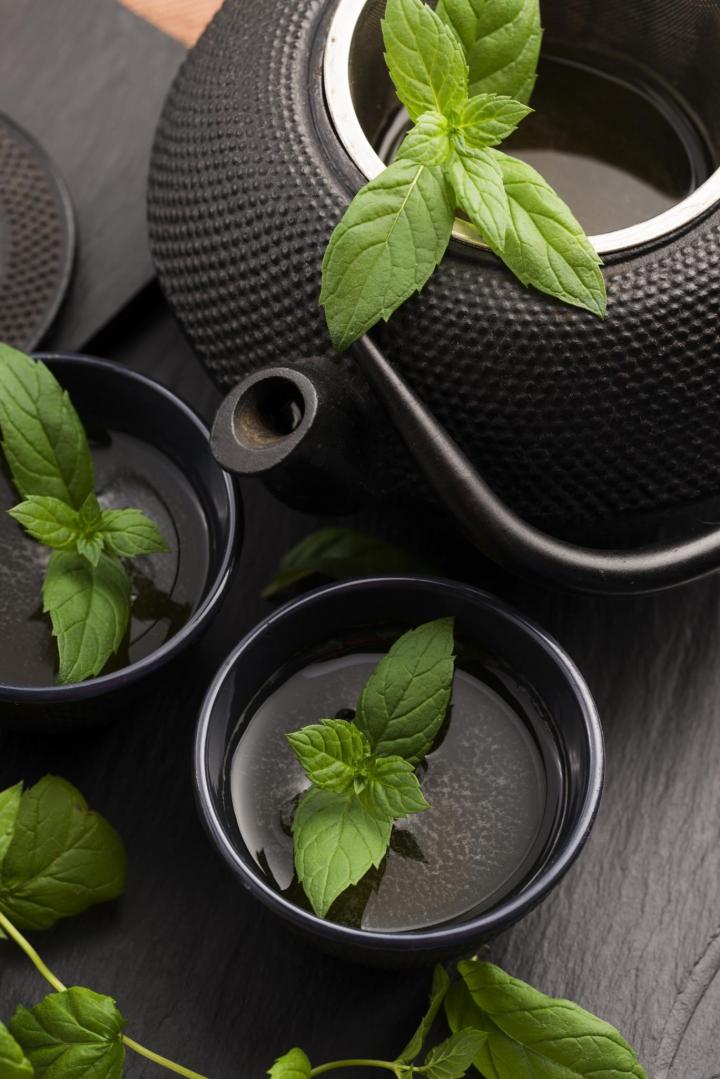
Mint is an easy herb to grow in your garden and can add flavor to every meal.
Planting, Growing, and Harvesting Mint
Types
- Apple/Pineapple Mint: Mentha suaveolens
- Corsican Mint: Mentha requienii
- Pennyroyal: Mentha pulegium
- Peppermint: Mentha x piperita
- Citrus Mint: Mentha x piperita var. citrata
- Spearmint: Mentha spicata
Cooking Notes
Serious cooks generally prefer spearmint for savory dishes and peppermint for desserts. Try apple or orange mint for a delicate mint taste in fruit salads, yogurt, or tea. Mint lurks in the background in Middle Eastern salads, such as tabouli, and does well with lamb. It also goes with peas, zucchini, fresh beans, marinades for summer vegetables, cold soups, fruit salads, and cheese.

Tip! Make flavored ice cubes by freezing trays of strong mint tea, then use the ice cubes for your drinks!
ADVERTISEMENT
I am growing mint cuttings indoors in small 3" pots under a growing lamp so that I can have a regular supply throughout the winter. My query is that the leaves never get that large. Would I be better to move them to larger pots to achieve this?
I know mint well. My mother always used when i was young, and used to make Cheese from goat milk. Mint leaves used to add “ Burcad” to make good sense. Personally, now i used mint just tea and rice. I like mint
how do I use chocolate mint ,,,I have
it in large pot and it smells wonderful but I don't know what to use it in or how to use it
I used to grow both chocolate mint and stevia. When I was working in the garden I would take a leaf from both and eat them. Nothing simpler, and so lovely! You can also make an essence (flavoring) out of just about any edible leaf, to use in baking, or sometimes I will use a few drops of essence to flavor coffee.
First thing that comes to my mind is putting it in hot cocoa or on ice cream!! 🥰🍀🥰🍀
Chop it fine and put in your salad, along with shredded coconut, just be sparing with both.
I loved my chocolate peppermint! It hid well in brownies! (Moving meant giving the planter of it away, but what a treat!) Hopefully we can find a new one...
Please add spider mites to your list of peppermint pests. They all but destroyed my once-bushy plants. I had to clip and root some healthy tops just to save them. I also must spray a rosemary oil-detergent-water mixture on the reviving stems still outside. <:-(
Years ago a golf ball sized hole popped up overnight in my parking area. I assumed it was a mole/vole or some such critter. I kicked some gravel into the hole and tamped it down. That worked for a day or two and then it reappeared. Since it was right near where I got out when I parked, I didn't want to turn my ankle or provide an open invitation for additional holes so I decided to pour some used kitty litter (no poops included) down the hole and covered it over again. It seemed to work but a similar hole appeared about six feet away. More litter and the critters got the idea until this year. This time instead of litter I crushed a few stalks of mint and shoved them down their doorway. It was never removed and I haven't seen any more holes anywhere. This wasn't a scientific survey by any means, but if you're having problems with diggers in your lawn or garden and have a supply of mint it's worth a try before using chemicals or nasty traps. This might make them move to a different area on your property, but if you have a supply of mint like I do it shouldn't be a problem driving the little monsters out of the back forty.
Mice hate mint. I put mint tea bags around the garage and spray with a mint detergent that I got on amazon. very effective, freshens the areas and I love peppermint tea.











